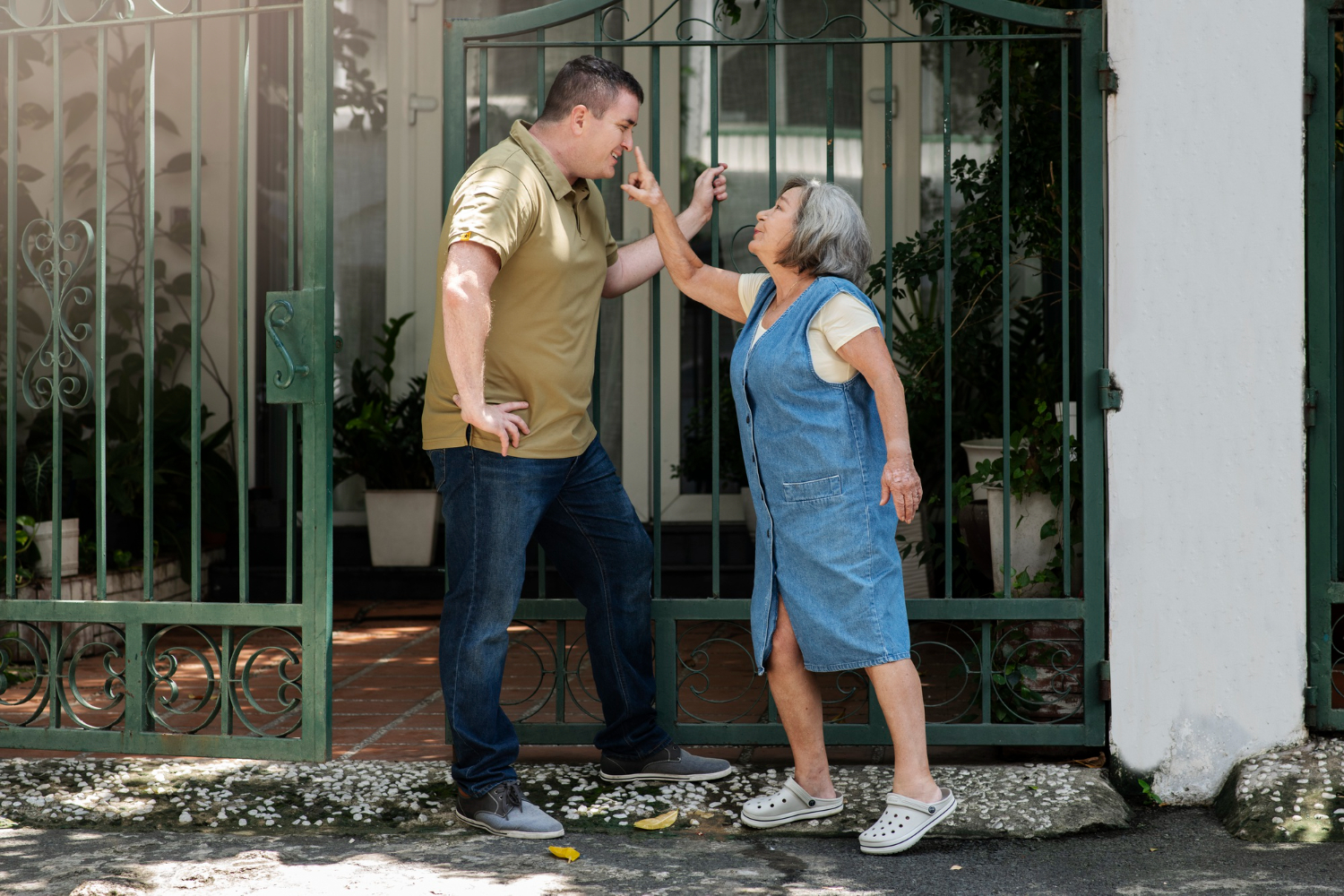Imagine a neighborhood where homes blend seamlessly, noise doesn’t intrude, and a sense of peace prevails. This harmony is often the work of a homeowners’ association (HOA), which sets down common rules to maintain the beauty, balance, and functionality of the community.
Explanation of Common HOA Rules
These rules touch various aspects of your life here. Architectural guidelines ensure consistency, preventing a clash of styles and colors. They dictate things like exterior paint, landscaping, and even modifications. This creates a visually pleasing environment, boosting curb appeal and property values.
Noise and nuisance regulations are your guardians of tranquility. Loud parties, disruptive activities, and even construction noise are kept in check, fostering a peaceful atmosphere where you can relax and unwind. These rules don’t just protect individuals; they build a sense of community and shared responsibility, where everyone contributes to a harmonious environment.
But don’t worry, you’re not just a rule-follower in this community. You’re an owner, with fundamental rights outlined in the HOA’s documents. You can freely use and enjoy your property within the set boundaries, and while there may be restrictions, you still have the power to personalize your home within those guidelines.

Homeowners’ Rights within an HOA
And guess what? You have a voice! HOAs typically allow voting on community matters, giving you a say in policies, rules, and even budgets. Regular meetings are your platform to share your thoughts and influence decisions that impact everyone. This empowers you, makes you feel invested, and reinforces a sense of belonging in your own neighborhood.
So, common HOA rules might seem restrictive at first. But look closer, and you’ll see they’re the threads that weave a tapestry of a beautiful, peaceful, and thriving community. They strike a balance between individual freedom and collective well-being, creating a place where everyone can truly feel at home.
Remember, the goal is not to micromanage lives, but to ensure everyone enjoys a desirable living environment. And with your participation and understanding, these rules become the foundation for a vibrant and harmonious community where you can truly flourish.
Responsibilities of Homeowners in an HOA
Homeowners in a homeowners association bear specific responsibilities that contribute to the overall well-being and functionality of the community. One primary responsibility pertains to dues and financial obligations. Homeowners are obligated to pay Homeowners’ Association fees, which contribute to the maintenance of communal areas, amenities, and essential services within the community. These fees are typically assessed periodically and are crucial for funding the operational and maintenance costs incurred by the HOA. Failure to fulfill these financial obligations can result in consequences such as late fees, interest charges, or even legal actions by the HOA to recover unpaid dues. Understanding and meeting these financial responsibilities is vital for the stability and continuity of community services and facilities.
Another key responsibility for homeowners within an HOA is the maintenance of their individual properties. This involves adhering to guidelines set forth by the association regarding property upkeep, including architectural standards, landscaping, and external modifications. Homeowners are expected to keep their homes in good condition, contributing to the overall aesthetic appeal of the community. Additionally, common areas and shared spaces necessitate collective responsibility. Homeowners often share the upkeep of communal areas, such as parks, sidewalks, or swimming pools. Collaborative efforts in maintaining these shared spaces enhance the overall quality of life within the community. By fulfilling these responsibilities, homeowners play an integral role in preserving property values, ensuring community cohesion, and fostering a pleasant living environment for all residents.
Understanding HOA Violation Notices
Homeowners’ associations (HOAs) implement various enforcement mechanisms to ensure that community rules and regulations are followed, fostering a harmonious living environment and maintaining property values. These enforcement mechanisms are designed to encourage compliance and address violations promptly.
One common enforcement mechanism utilized by HOAs is the issuance of violation notices. When a homeowner breaches community rules, the HOA sends a written notice detailing the specific violation and requesting corrective action. This initial communication serves as an informational and corrective measure, providing homeowners with an opportunity to rectify the issue before more severe consequences are imposed.
In cases where violations persist or remain unaddressed, HOAs often employ fines and penalties as a more stringent enforcement measure. These financial repercussions are intended to incentivize compliance with community rules. Fines can escalate for repeated or severe violations, emphasizing the importance of timely resolution to avoid additional financial burdens on homeowners.
Beyond fines, some HOAs have the authority to take legal actions against homeowners who continually violate community guidelines. Legal actions may involve pursuing a lawsuit to compel compliance or seeking injunctive relief to halt ongoing violations. The legal route is typically considered a last resort and is initiated when other enforcement measures fail to bring about resolution.
In extreme cases, HOAs may have the authority to place liens on a homeowner’s property. This means that the association can claim a legal interest in the property until outstanding dues or fines are paid. Property liens can affect a homeowner’s ability to sell or refinance their property, providing a powerful incentive for compliance.
While enforcement mechanisms are essential for upholding community standards, HOAs often aim for a balanced and fair approach. Many associations establish clear processes for homeowners to appeal violations or fines, ensuring a transparent and equitable resolution process. Effective communication and cooperation between the HOA board and homeowners are critical in creating a community that thrives on shared values and collective responsibility.

About Grace Periods and Corrective Actions
Grace periods and corrective actions are integral components of an HOA’s enforcement strategy. Upon identifying a violation, many HOAs provide homeowners with a grace period, during which they are notified of the infraction and given a specified timeframe to rectify the issue without incurring fines. This approach demonstrates a commitment to fairness and allows homeowners the opportunity to address the concern promptly. The grace period serves as a preventive measure, encouraging proactive correction of violations and fostering a cooperative atmosphere within the community.
As violations persist or remain unaddressed, fines become a more substantial enforcement measure. The escalation of enforcement measures involves imposing monetary penalties on homeowners who fail to comply with community rules. Fines are often structured to increase for repeated or severe violations, emphasizing the importance of timely resolution. The objective is not only to address the specific violation but also to deter future non-compliance, fostering a community where residents are conscientious about adhering to established guidelines.
In cases where fines and other corrective actions prove ineffective, HOAs may resort to legal actions as a last resort. Legal implications for repeated violations may involve pursuing a lawsuit against the homeowner to enforce compliance or seeking injunctive relief to halt ongoing violations. The legal route underscores the seriousness of the situation and the association’s commitment to upholding community standards. However, most HOAs aim to use legal actions judiciously, recognizing that a collaborative and communicative approach is generally more conducive to maintaining a positive community atmosphere.
Dispute Resolution within HOAs: Mediation, Arbitration and Alternative Dispute Resolution Methods
Dispute resolution within homeowners’ associations is a critical aspect of maintaining a harmonious living environment. HOAs often implement alternative dispute resolution methods, such as mediation and arbitration, to address conflicts in a fair and efficient manner. These methods offer homeowners an opportunity to resolve disputes without resorting to costly and time-consuming legal proceedings. Mediation involves a neutral third party facilitating discussions between the parties involved, helping them reach a mutually agreeable solution. Arbitration, on the other hand, entails the appointment of a neutral arbitrator who reviews the evidence and makes a binding decision. Both alternatives provide a more collaborative and less adversarial approach to conflict resolution.
One of the key benefits of utilizing alternative dispute resolution methods within HOAs is the avoidance of court proceedings. Resolving issues outside of court helps mitigate the financial and emotional costs associated with legal battles. It also allows homeowners to maintain a more amicable relationship with their neighbors and the HOA, as the focus remains on finding common ground rather than engaging in adversarial confrontations. Additionally, the expediency of these methods contributes to quicker resolutions, minimizing disruptions to the community and promoting a more efficient dispute resolution process.
In cases where alternative methods prove ineffective or inappropriate, homeowners may have legal recourse through lawsuits and legal actions against the HOA. Lawsuits can be filed to address issues such as alleged breaches of governing documents, unfair treatment, or failure to adhere to established procedures. Navigating the legal processes for dispute resolution, however, can be complex, requiring a thorough understanding of HOA bylaws and applicable laws. Homeowners seeking legal recourse may need to consult with attorneys specializing in real estate or community association law to navigate the complexities of litigation and ensure a fair and just resolution.
Overall, a well-structured dispute resolution process within HOAs, whether through alternative methods or legal recourse, is essential for maintaining a cooperative and positive living environment. Encouraging open communication and providing clear guidelines for conflict resolution contribute to a more harmonious community where residents feel supported in addressing their concerns.
Changes in HOA Rules and Regulations
Changes in HOA rules and regulations are dynamic processes that may be necessary to adapt to the evolving needs and circumstances of a community. Amendments to HOA documents, including rules and guidelines, typically involve a structured and transparent process. The association typically outlines a clear procedure for changing rules, often requiring a proposal from the HOA board, which is then subject to review, discussion, and approval. Homeowner involvement in the rule-change process is crucial, and many HOAs encourage active participation through community meetings, surveys, or feedback sessions. This ensures that proposed amendments reflect the collective needs and preferences of the residents. The process often emphasizes transparency and democratic principles, allowing homeowners to understand, discuss, and contribute to the shaping of community rules. Involving homeowners in the amendment process not only fosters a sense of ownership and shared responsibility within the community but also helps maintain a fair and balanced set of guidelines that resonates with the diverse perspectives of the residents.
Amendments to HOA documents represent a critical aspect of community governance, allowing homeowners’ associations (HOAs) to adapt to changing circumstances and enhance the overall quality of community living. The process for amending HOA documents typically involves a well-defined series of steps. Initially, a proposed amendment is often presented by the HOA board, outlining the specific changes to existing rules and guidelines. This proposal then undergoes a thorough review process, including discussions within the board and sometimes a legal review to ensure compliance with local laws. Homeowner involvement is a key component of this process, with many HOAs conducting community meetings or providing avenues for feedback to ensure that proposed amendments consider the perspectives and concerns of the residents.
The homeowner involvement in the amendment process extends beyond a mere review; it often includes opportunities for residents to voice their opinions, ask questions, and express their concerns. Some HOAs may conduct open forums or surveys to gauge community sentiment before finalizing any changes. This democratic approach not only fosters transparency but also reinforces a sense of community engagement and collaboration. By actively involving homeowners in the amendment process, HOAs can ensure that the resulting changes align with the community’s values, preferences, and the evolving needs of its residents. This inclusive approach contributes to a more cooperative and well-informed community, where residents feel empowered and informed about the governance of their shared living space.
Recap of HOA Rules, Rights and Responsibilities
Encouraging homeowners to stay informed and engaged in their community’s governance is crucial for fostering a thriving and harmonious living environment within an HOA. By actively participating in the governance of their community, homeowners contribute to the decision-making processes that shape the neighborhood’s future. Here are several reasons and encouragement for homeowners to stay involved:
Firstly, staying informed allows homeowners to understand the rules and guidelines set by the HOA. Regular updates on community matters, policy changes, and upcoming events can be disseminated through newsletters, community meetings, or online platforms. Being aware of these developments helps homeowners align their actions with community standards, reducing the likelihood of unintentional violations and fostering a sense of collective responsibility.
Moreover, active participation provides homeowners with a voice in the decision-making processes of the community. Attending HOA meetings, voicing concerns, and participating in discussions enable homeowners to influence policies, rules, and budgets that directly impact their living environment. This participatory approach not only ensures that diverse perspectives are considered but also promotes a more inclusive and democratic community governance.
Staying engaged in the community’s governance also facilitates better understanding and resolution of disputes. When homeowners are informed about community rules and processes, they are better equipped to address conflicts in a constructive manner. Additionally, it creates a sense of accountability and transparency within the HOA, fostering trust between residents and the association.
To encourage homeowners to stay informed and engaged, HOAs can organize educational workshops, town hall meetings, or create user-friendly platforms for communication. Recognizing and appreciating the contributions of involved homeowners can further motivate others to actively participate in community governance. Ultimately, a well-informed and engaged homeowner base contributes to the overall success, vibrancy, and sense of community within an HOA.




